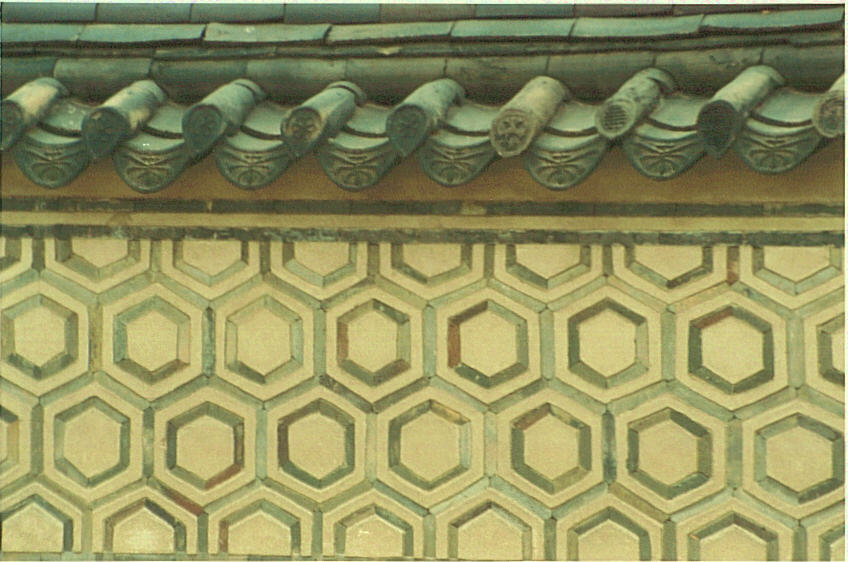Korean architects were well educated and with the educated/ cultured class were referred to as Yang-ban. There approach to architecture was always simplistic. Rooms were simple, small and never ostentatious.

Here is a close up example of brick/wall stratigraphy. What dominates this picture, is the double hexagonal design, constructed of stone, plaster and specially cut ceramic tiles. Below the bi-hexagonal design one can just make out that this design stratum is truncated by another of a different design.
The the roof or wall ridge meets hexagonal design by way of a double line constructed of tiles and a change to an ochre colour. Notice that the roof tiles are very ornate indeed. Some are rounded and others are shallowly concave, being bisected by ridge struts at the top is a layer constructed
of fine grained tiles. On the ends of each tile, is what I suspect are confucuanist motifs.
